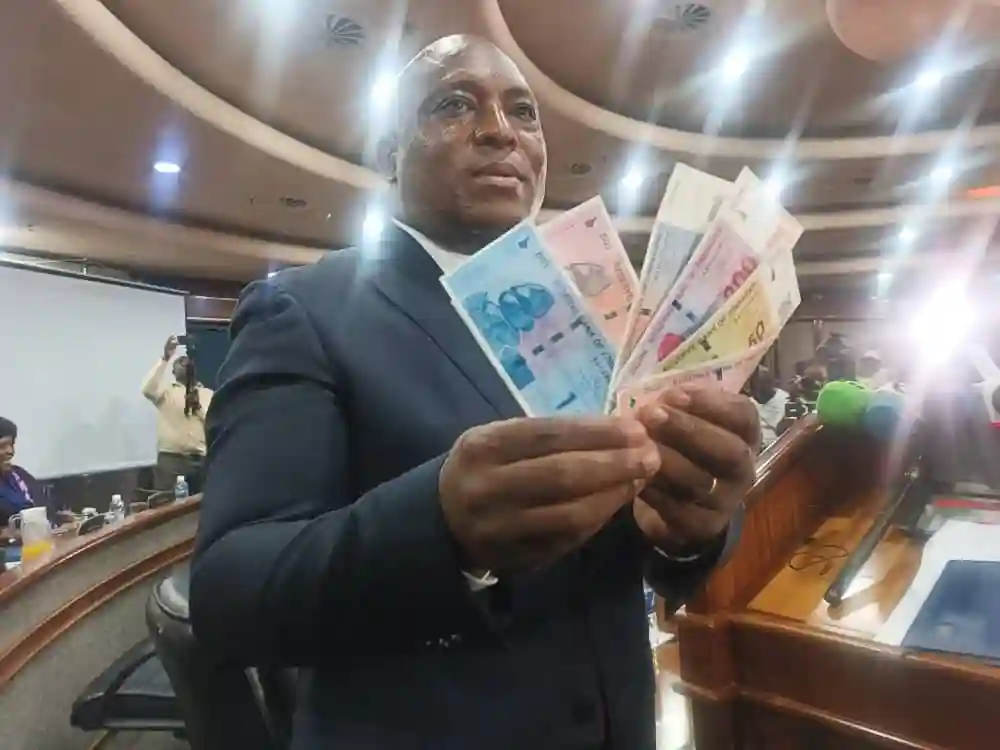The Reserve Bank of Zimbabwe (RBZ) under new governor John Mushayavanhu reportedly destroyed millions’ worth of Zimbabwe Gold (ZiG) banknotes.
According to The NewsHawks, these banknotes, printed at considerable expense, bore the signature of Mushayavanhu’s predecessor John Mangudya.
When Mushayavanhu announced the introduction of the ZiG currency on April 05, there were already millions of banknotes of the new currency that had been printed under his predecessor, Mangudya.
These pre-printed notes had to be destroyed to remove the ones signed by Mangudya, which Mushayavanhu did not want to circulate alongside notes bearing his signature.
According to the report, that was the reason the new ZiG notes took almost a month to introduce as the RBZ had to print again from scratch. The NewsHawsks reported an RBZ official as saying:
When Mushayavanhu came in, there were already ZiG banknotes that were printed in large quantities and signed by Mangudya.
Mushayavanhu was initially expected to replace Mangudya whose 10-year term at the RBZ was due to end on 30 April 2024.
However, in a notice, President Emmerson Mnangagwa brought forward his appointment in an official gazette: (It is hereby notified that His Excellency the President has, in terms of section 14 of the Reserve Bank of Zimbabwe Act (Chapter 22:15) appointed John Mushayavanhu as the Governor of the Reserve Bank of Zimbabwe for a period of five years beginning on March 28, 2024, and ending on March 27, 2029′).
Mushayavanhu’s tenure at the helm of the Central Bank started more than a month earlier so that he could take charge of the ZiG process.
RBZ officials were cited as saying Mushayavanhu did not want the new currency to be associated with Mangudya in any way, hence the already printed and signed notes had to be destroyed. Said an official:
The ZiG notes that were signed by Mangudya and bore his signature had to be destroyed as Mushayavanhu wanted a clean break from the past and not to be associated with bond notes or any other currency version issued in the past.
For better or worse, Mushayavanhu’s attitude is that he is different from Mangudya and all his predecessors, which is why he says he will never print money, ‘not under my watch’.
The amount of liquidity in the market at the time was RTGS16.5 trillion (US$500 million).
The proportion of cash in market liquidity varies depending on the market, asset class, and economic conditions…
Now, in this case, cash was about US$50 million in the market and 5% of that had been printed, probably US$5 million which means that the RBZ under Mushayavanhu destroyed or burnt banknotes worth that.
An RBZ official revealed that the RBZ had started printing ZiG notes well before the new currency was launched. Said the official:
There was a liaison platform behind the scenes bringing together Mangudya and Mushayavanhu for a smooth transition.
Mangudya started the process and hoped Mushayavanhu would continue from where he left, only to discover that his successor — coincidentally another John — was not interested in that.
He wanted to draw a line and start afresh even though some ZiG notes had been printed.
Mangudya had built some gold and cash reserves which he handed over to Mushayavanhu to ensure he started on stronger footing, but the issue of who signs the ZiG notes became a moot point.
Mangudya thought there was nothing wrong with him signing some of them and Mushayavanhu some, with the ones signed by the former subject to be phased out from circulation gradually, but the latter wanted them out of the market before they were even formally introduced.
That ensured Mushayavanhu launched ZiG without notes, forcing the country and market to wait for a month while they were being printed.
This also implied that millions of dollars worth of banknotes signed by Mangudya had to be burnt or destroyed at a huge cost.
ZiG notes only hit the market on 30 April, more than three weeks after the currency was launched because the printed notes had been withheld, destroyed and were being reprinted.
Authorities say ZiG is backed by US$575 million worth of reserves: foreign currency, gold, and other precious metals.
More: Pindula News

